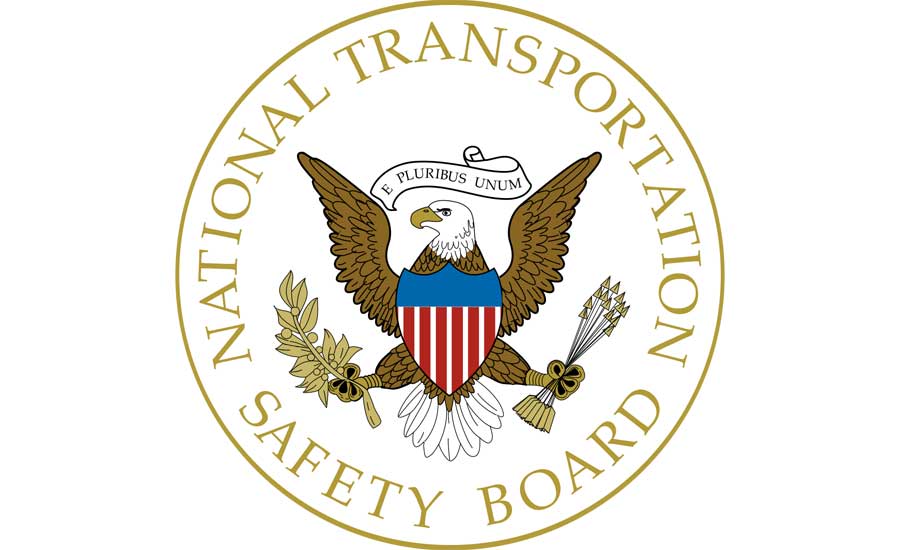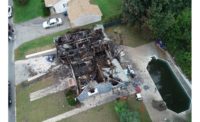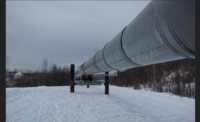After Mass. gas explosions, urgent recommendations from NTSB

The National Transportation Safety Board (NTSB) has issued urgent safety recommendations based on its investigation into the gas explosions and fires that rocked a residential section of a Massachusetts town in September. The incident in Merrimack Valley killed one person, sent at least 21 others to area hospitals and destroyed dozens of buildings.
The first item on the safety recommendation report : that the Commonwealth of Massachusetts eliminate exemptions for the professional engineer licensure for public utility work and a for requirement for a professional engineer’s seal on public utility engineering drawings.
The remaining four urgent safety recommendations were issued to NiSource, Inc., the parent company of subsidiary Columbia Gas of Massachusetts, which owns and operates the natural gas distribution system involved in the accident. These urgent safety recommendations seek:
- Revision to the engineering plan and constructability review process across all of NiSource, Inc.’s subsidiaries to ensure all applicable departments review construction documents for accuracy, completeness and correctness, and that documents or plans be sealed by a professional engineer prior to work commencing.
- A review and of all of NiSource, Inc.’s records and documentation of natural gas systems to ensure they are traceable, reliable and complete.
- Application of management of change process to all changes to adequately identify system threats that could result in a common mode failure.
- Development and implementation of control procedures during modifications to gas mains to mitigate risks identified during management of change operations, with gas main pressures continually monitored during modifications and assets placed at critical locations to immediately shut down the system if abnormal operations are detected.
In the safety recommendation report, the NTSB says omissions in the engineering work package and construction documentation for the project were discovered during investigators’ review. These omissions were not identified by the Columbia Gas constructability review. While the engineering design package for the South Union Street project underwent a constructability review, NTSB investigators found the review did not identify the impact on pressure regulation and control. The Columbia Gas field engineer who developed the engineering plans told NTSB investigators he developed them without reviewing engineering drawings that documented the regulator-sensing lines.
The NTSB believes a comprehensive constructability review, which would require all departments to review each project, along with the seal of approval from a professional engineer would likely have identified the omission of the regulator-sensing lines, thereby preventing the error that led to the accident. Neither the Commonwealth of Massachusetts nor Columbia Gas policy require a registered professional engineer to develop or review public utility engineering plans.
The NTSB further believes it is critical for an engineer with appropriate qualifications and experience to review engineering plans for a gas company, if not develop them. The Commonwealth of Massachusetts’ exemption for the requirement of professional engineer licensure to perform “industrial” and public utility work foreclose an opportunity to detect this design oversight.
Columbia Gas engineering plans used during the construction work did not document the location of regulator-sensing lines. The NTSB believes had accurate alignment sheets with comprehensive system information been available and used, engineers and work crews would have been able to identify the regulator-sensing lines and ensured their relocation prior to abandoning the pipeline main.
NTSB investigators also determined that had Columbia Gas adequately performed management of change and placed personnel at critical points along the system, Columbia Gas could have immediately addressed the issue and mitigated the consequences of the event.
The NTSB does not need to wait to develop probable cause for an accident to issue safety recommendations. In this investigation, the NTSB issued five urgent safety recommendations to address the imminent threat to life safety created by the conditions discovered thus far in the agency’s ongoing investigation of the accident.
The full safety recommendation report is available online at https://go.usa.gov/xPGdr.
Looking for a reprint of this article?
From high-res PDFs to custom plaques, order your copy today!






